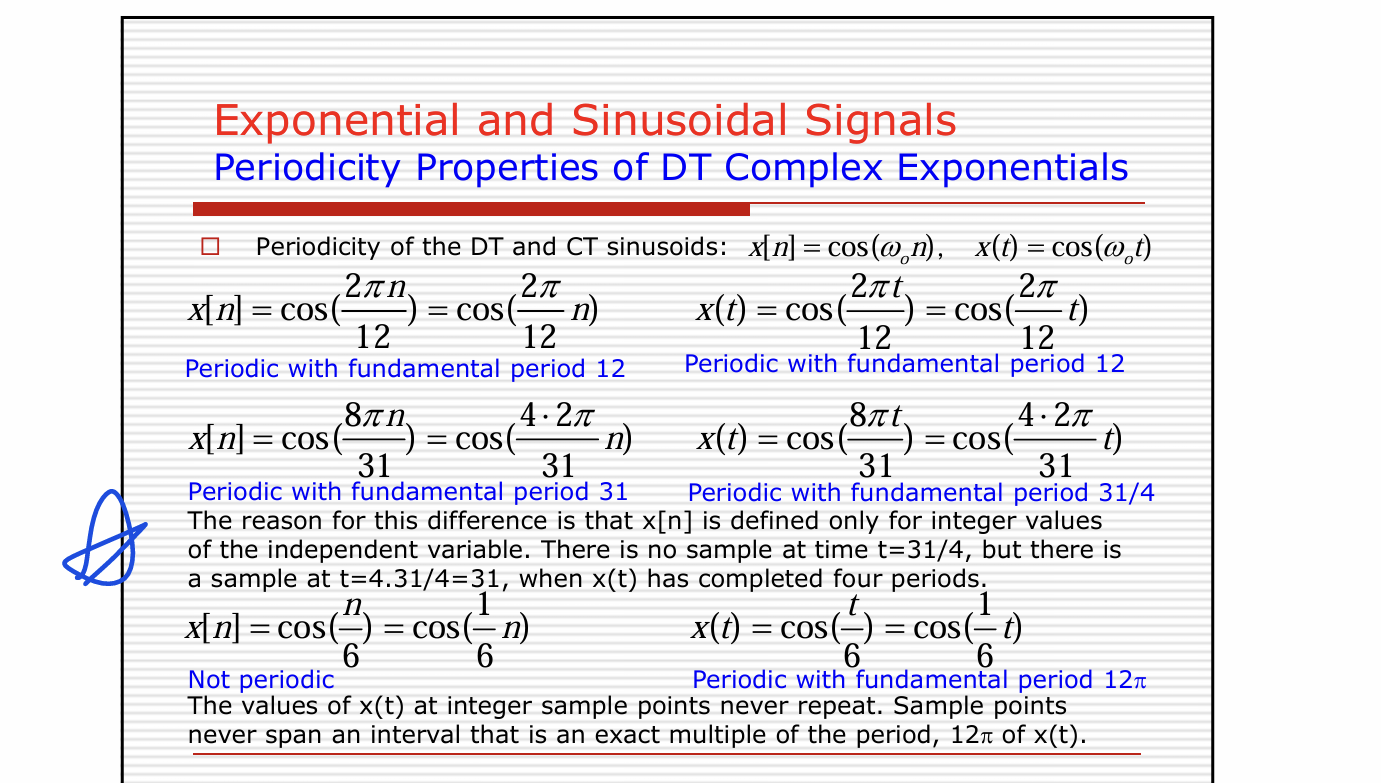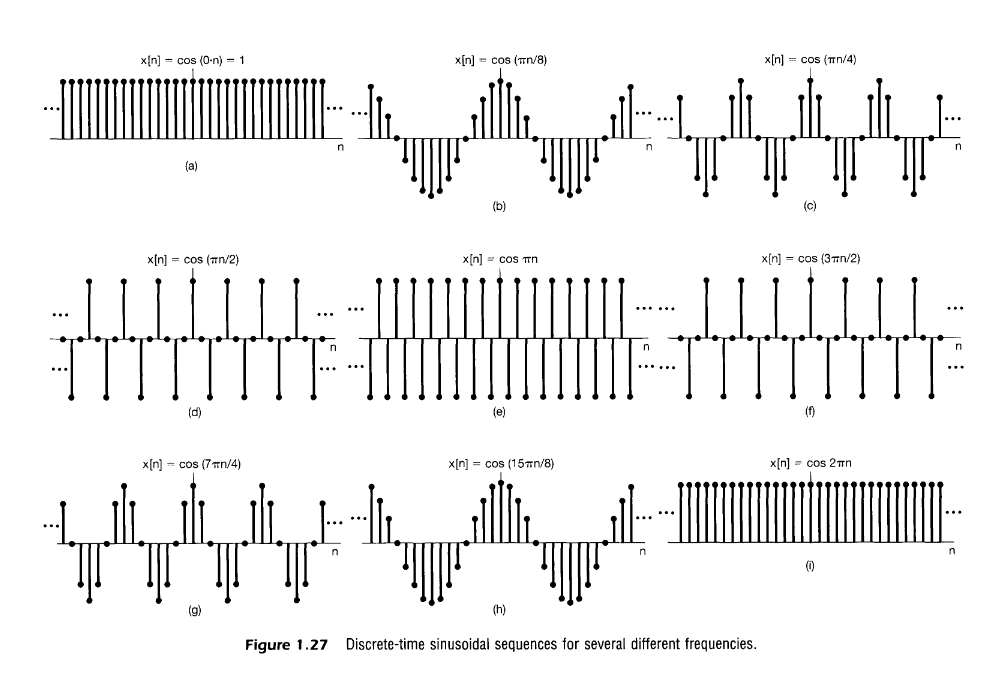rwsignal8nisan
The exponential with frequency ω₀ is identical to the exponentials with frequencies ω₀ ± 2π, ω₀ ± 4π, ω₀ ± 6π, and so on. This is the key concept of aliasing in discrete-time. Because the signal is only sampled at discrete points in time, you can’t distinguish between a signal with frequency ω₀ and signals whose frequencies differ by integer multiples of 2π.

- This holds true because n is always and integer in DT. Yet for CT, this wouldnt hold true almost for all t. Therefore, in continuous time:
e^(j(ω₀ + 2π)t) ≠ e^(jω₀t)(in general)
Why aliasing exist?
Reason for aliasing in discrete-time is that sampling loses information
How DT sequence reacts to increase in w?
As we increase ω₀ from 0, we obtain signals that oscillate more and more rapidly until we reach ω₀ = π.This describes the behavior in the first half of the fundamental frequency range. Fromω₀ = 0(a constant signal) toω₀ = π, increasing the frequency does increase the oscillation rate, as you’d expect.If we continue to increase ω₀, we decrease the rate of oscillation until we reach ω₀ = 2π, which produces the same constant sequence as ω₀ = 0.This is where aliasing manifests. Beyondω₀ = π, increasing the frequency actually decreases the oscillation rate. The frequencies are “folding back” due to aliasing.ω₀ = 2πis equivalent toω₀ = 0(both are constant signals),ω₀ = 2π + Δis equivalent toω₀ = Δ, and so on.- Frequencies near odd multiples of
πrepresent the fastest possible oscillations in discrete-time. The low frequency (slowly varying) DT exponentials have values of ω₀ near 0, 2π and any other even multiple of π. Because of aliasing, frequencies near even multiples ofπare all equivalent to low frequencies (slow oscillations). Why?questionsdead

